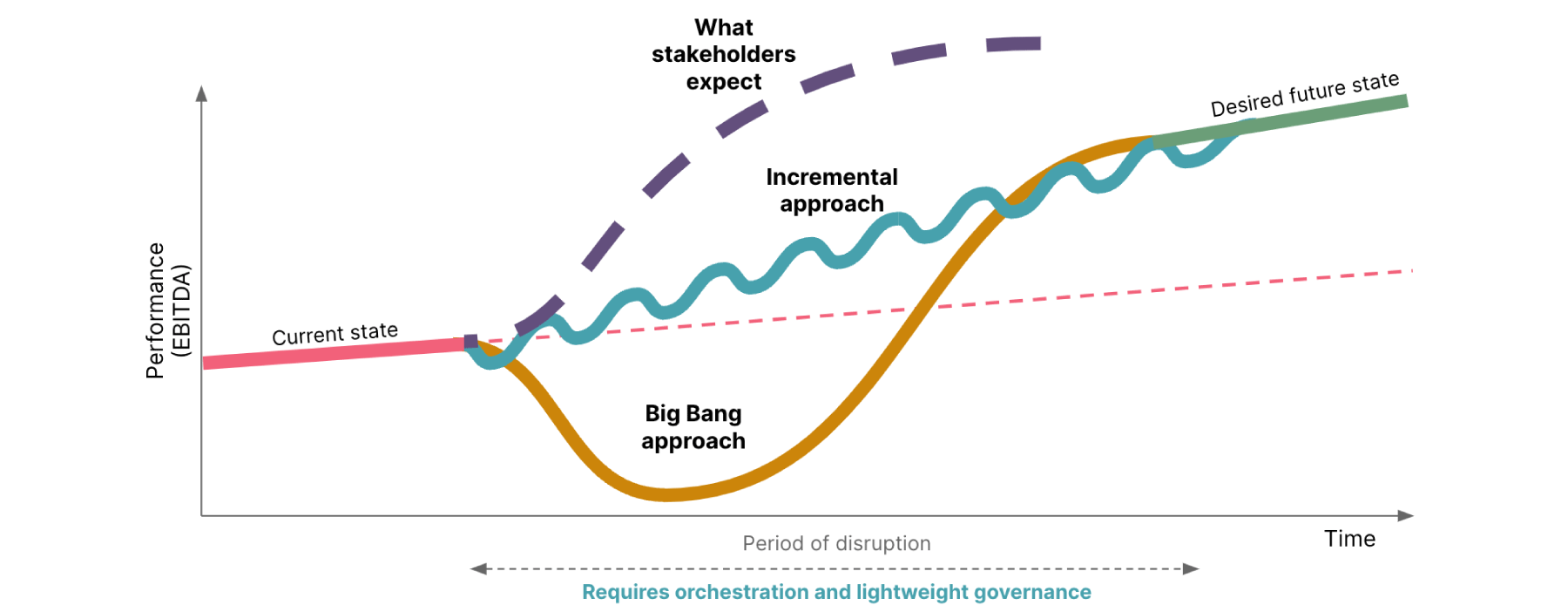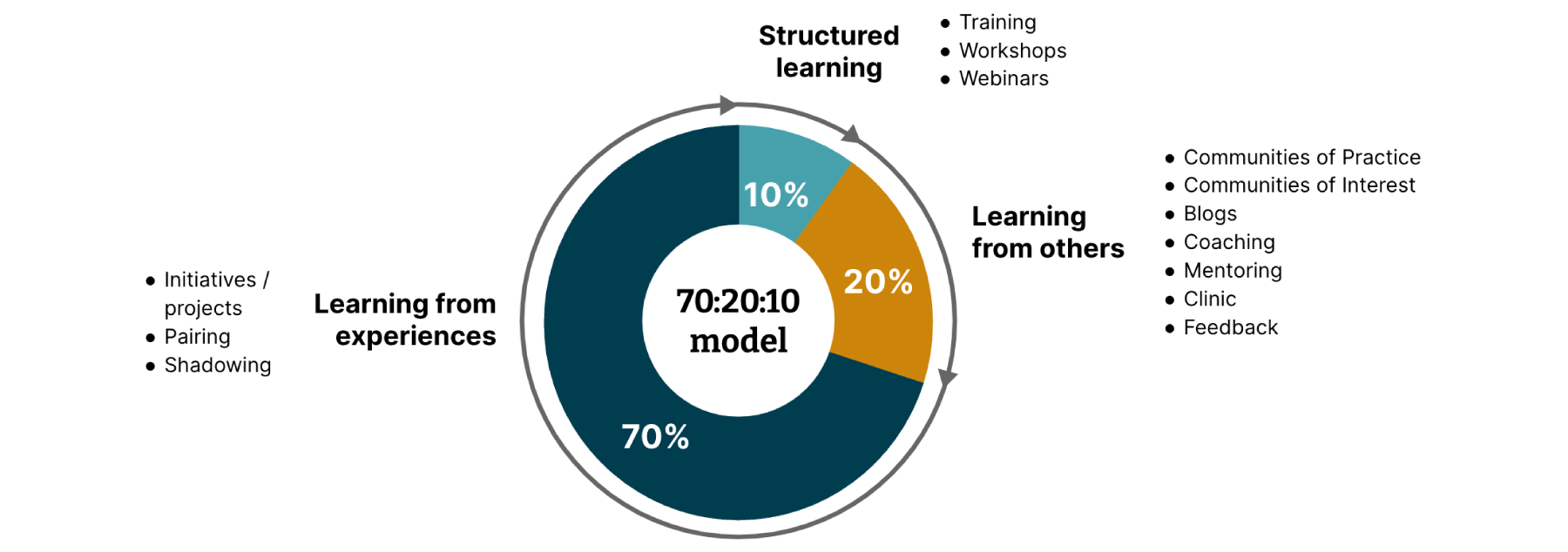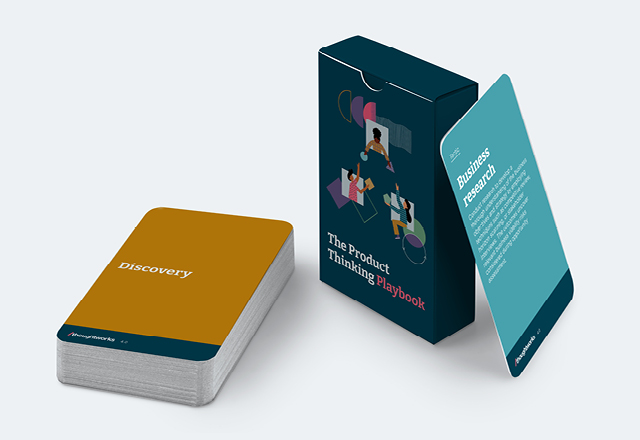From constant advances in technology to a continuous stream of new customer demands and expectations, today's organizations have to contend with an immense volume and velocity of change.
Old processes, practices and ways of working simply aren't cutting it. Traditional project-based approaches to transformation and change weren't designed for the speed at which modern organizations need to operate.
That's why many leaders are shifting away from project thinking and reorienting their enterprise around products — working to become great product organizations. As the name suggests, product organizations continuously iterate on and evolve their offerings as products, in line with the new opportunities, demands and expectations emerging around them.
There are many compelling reasons why an enterprise might want to become a customer-centric, tech-enabled and outcome-led product organization, and you'll find all of them in our new ebook, coming soon.
But becoming a great product organization demands a lot of change, and the process can be fraught with pitfalls. In this article, we'll explore the full scope of change required to become product-oriented and share some proven practices to help you manage that change at scale.
Make change evolutionary, not revolutionary
At the beginning of any major change program, stakeholder expectations are likely to be very high. You've sold them on the value of the change and now, they want to see that value realized.
Executing a change program with a 'big bang' or revolutionary approach typically leads to significant challenges. In an attempt to deliver all that every stakeholder wants at once, an organization can see performance fall sharply at the time when stakeholders' expectations are highest, as shown in the figure below.


Adaptation of the Change Curve by Elisabeth Kubler-Ross, known as the J-curve effect
The prolonged period of disruption and decreased performance encountered when taking a big bang approach to change can quickly see programs grind to a halt or even fail altogether.
But by taking an incremental or evolutionary approach and delivering smaller, more targeted changes for specific stakeholder groups, you can demonstrate value a lot faster. It takes a similar time to reach your desired future state, but progress towards that point is much steadier, and clearer for everyone to see. That helps keep everyone onside and ensures that support for your transformation remains high.
Starting small helps you maximize the impact of exposure
The other big advantage of taking an incremental, evolutionary approach to becoming a product organization is that it can help you take advantage of the 'mere-exposure effect,' where people tend to develop a preference for things they're familiar with.
So, if you can introduce change to teams incrementally and build familiarity with new processes and ways of working while evolving them, there's a much greater chance that those changes will stick.
You end up with a change management approach where everyone is slowly introduced to changes in manageable chunks, or slices. Then people build an attachment to those slices, helping to embed your change and keep it in place as you iterate on it and progress towards your desired state.
If you want some help planning out your iterative transformation — management methodologies like John Shook's 'change by doing' approach, Prosci's ADKAR® Model or even Kotter's 8-step model of change can bring some proven structure to your approach.
Create a culture of learning to accelerate your evolution
To build a great product organization, you must first become a learning organization. That means prioritizing personal and professional growth, and creating the psychological safety people need to ask questions, experiment and learn.
Cultures of learning also need to ensure that everyone has the time to experiment with new capabilities and ways of working and is actively encouraged to do so. They should be pushed to run safe-to-fail experiments, with the understanding that failing in those experiments is completely acceptable and a part of the growth process.
There are numerous other methods and tactics out there that can help you build safe learning environments:
Coaching and partnering programs that give people the guidance and support they need to adapt to change and achieve their goals.
Casual chat and 'coffee talk' sessions that enable people from different teams to connect and learn from each other's experiences.
Clinic sessions where anyone can ask any questions they have about your change journey and get immediate answers from leaders.
Online learning platforms that give everyone the chance to answer their own questions and build the skills they need to adapt to change in their own time.
Focused hackathons where teams are brought together and given specific focus time to experiment in brave and innovative ways.
The 70:20:10 model provides a useful guide for ensuring people get the hands-on learning experiences that are crucial for effectively adapting to change.


The 70:20:10 model for learning and development by Michael Lombardo and Robert Eichinger
Managing product organization change is tough. But it's well worth the effort.
Becoming a great product organization represents a huge shift for organizations and everyone within them. It demands very careful, deliberate and well-planned change management. But the outcomes are worth the effort.
Product organizations are built to adapt at speed and continuously deliver exactly what markets, users and customers demand. To learn more about product organizations, what becoming one could do for your enterprise, and how to accelerate your transformation, check out our new ebook How to build an organization that creates great products.


















